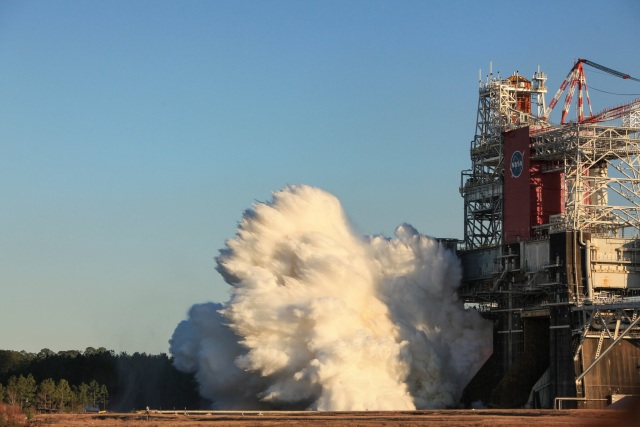The previous tests of the engines took place on January 16, when they worked simultaneously for about a minute, although it was expected that this would last about eight minutes
NEW YORK, January 30. /TASS/. Specialists of the US National Aeronautics and Space Administration (NASA) intend to conduct new fire tests of the Space Launch System (SLS) launch vehicle engines at the end of February, the previous ones were completed ahead of schedule. This is stated in a statement published on Friday on the website of the space agency.
The test of four engines installed on a special support on the territory of the NASA test complex in Mississippi will be carried out "as early as the fourth week of February."
Previous engine tests took place on January 16. Then they worked simultaneously for about a minute, although it was expected that this would last about eight minutes. The project manager for the development of the SLS, John Honeycat, explained that an automatic system was triggered, disabling the operation of the engines. One of the reasons for this, as it turned out later, was the settings of the corresponding software, they will be changed.
The specialists studied all the data obtained during the previous test. Employees of the department found that the engines did not receive significant damage. NASA expects that the upcoming tests will last eight minutes.
In the spring of 2019, NASA announced the project of the Artemis lunar program, which will consist of three stages. The first of them (Artemis 1) provides for an unmanned flight of the Orion spacecraft installed on the Space Launch System rocket around the Moon and its return to Earth. The second stage (Artemis 2) is a flyby of the Earth's natural satellite with the crew on board. In the third phase of the mission (Artemis 3), NASA expects to land astronauts on the Moon in 2024, and then send them to Mars approximately in the mid-2030s. The first stage of the program is scheduled for this year, the second-for 2023. After the engine tests that took place on January 16, NASA admitted that these plans could be revised.

